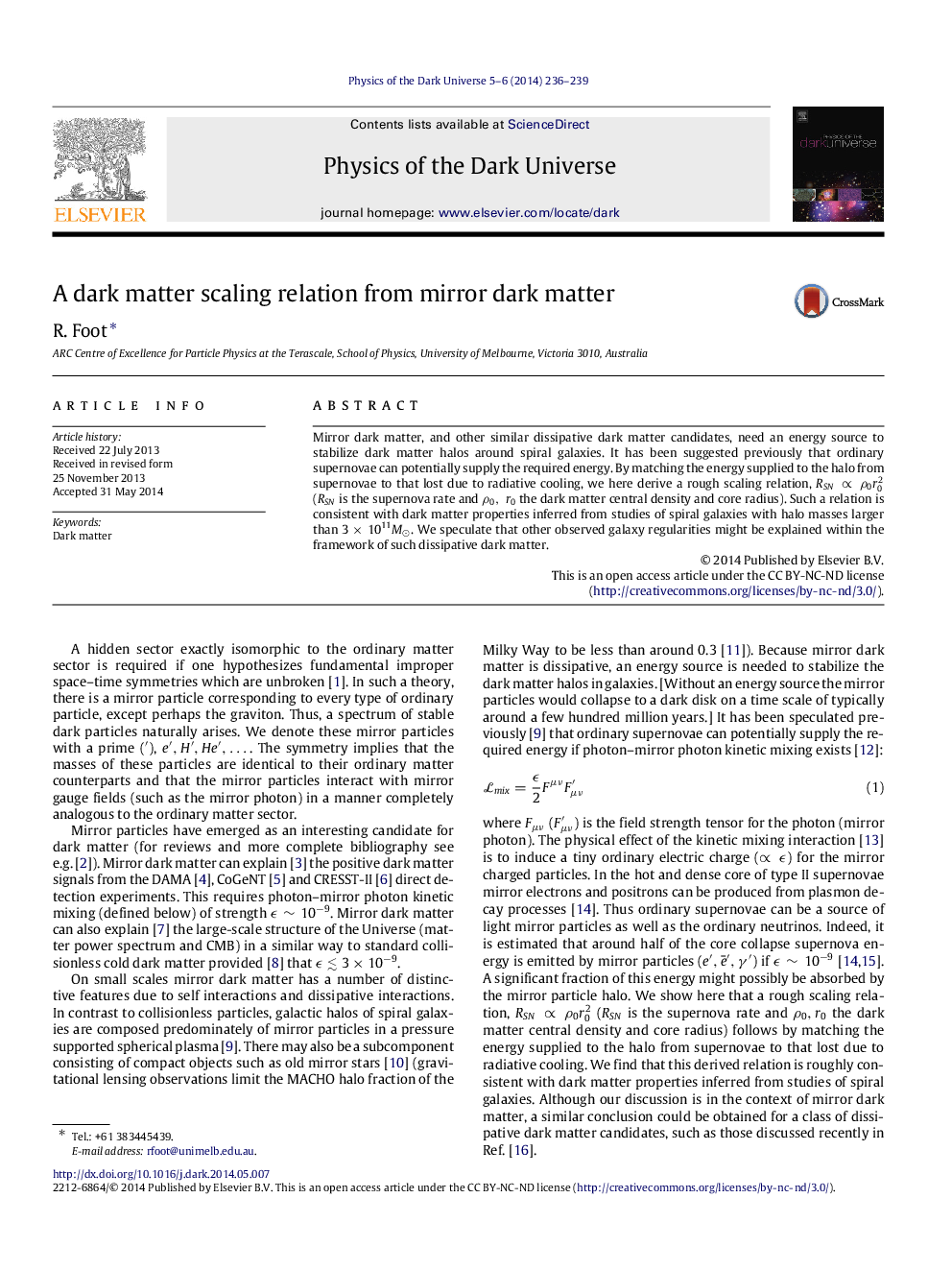| Article ID | Journal | Published Year | Pages | File Type |
|---|---|---|---|---|
| 1780780 | Physics of the Dark Universe | 2014 | 4 Pages |
Abstract
Mirror dark matter, and other similar dissipative dark matter candidates, need an energy source to stabilize dark matter halos around spiral galaxies. It has been suggested previously that ordinary supernovae can potentially supply the required energy. By matching the energy supplied to the halo from supernovae to that lost due to radiative cooling, we here derive a rough scaling relation, RSNâÏ0r02 (RSN is the supernova rate and Ï0,r0 the dark matter central density and core radius). Such a relation is consistent with dark matter properties inferred from studies of spiral galaxies with halo masses larger than 3Ã1011Mâ. We speculate that other observed galaxy regularities might be explained within the framework of such dissipative dark matter.
Related Topics
Physical Sciences and Engineering
Physics and Astronomy
Astronomy and Astrophysics
Authors
R. Foot,
